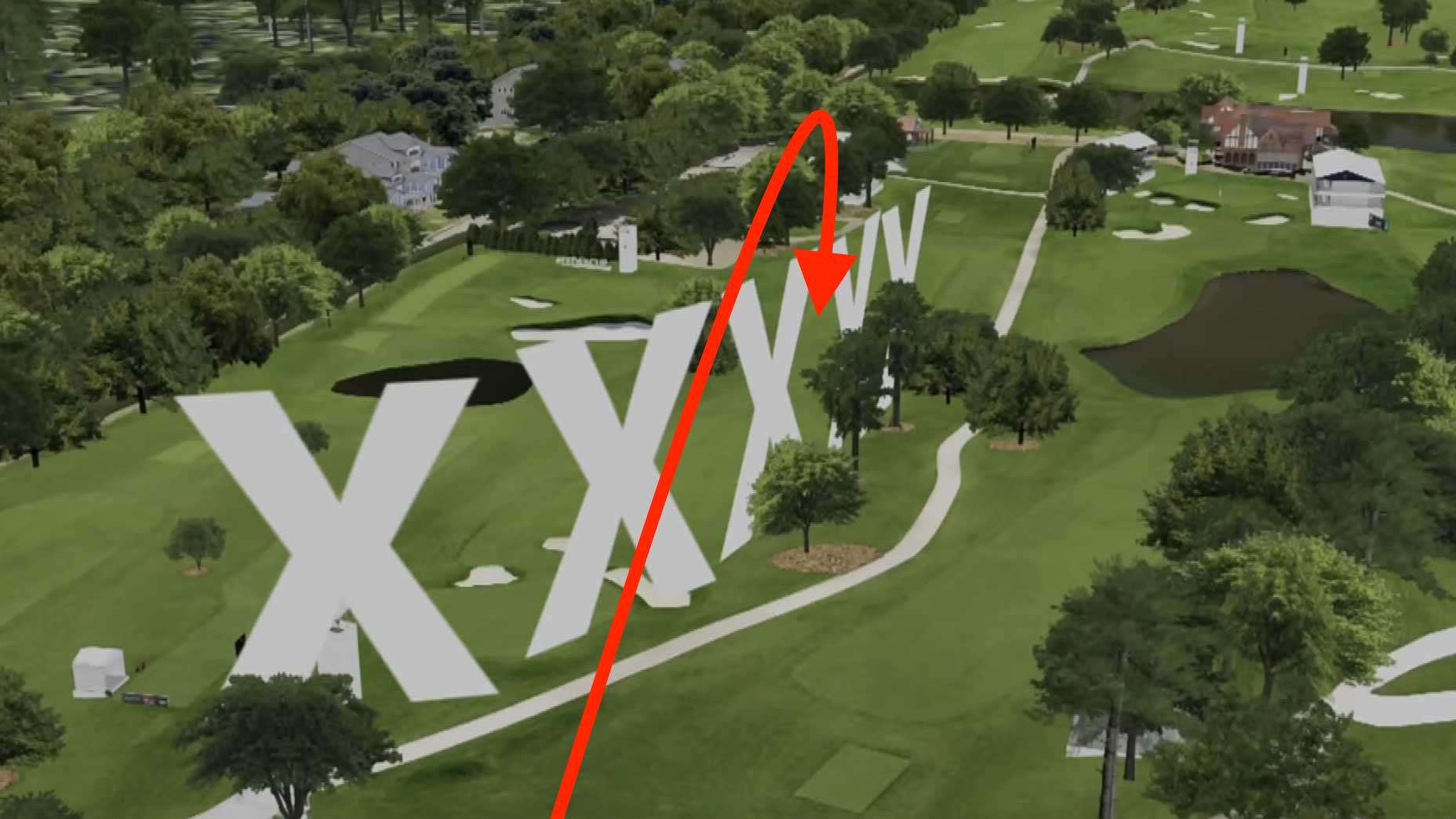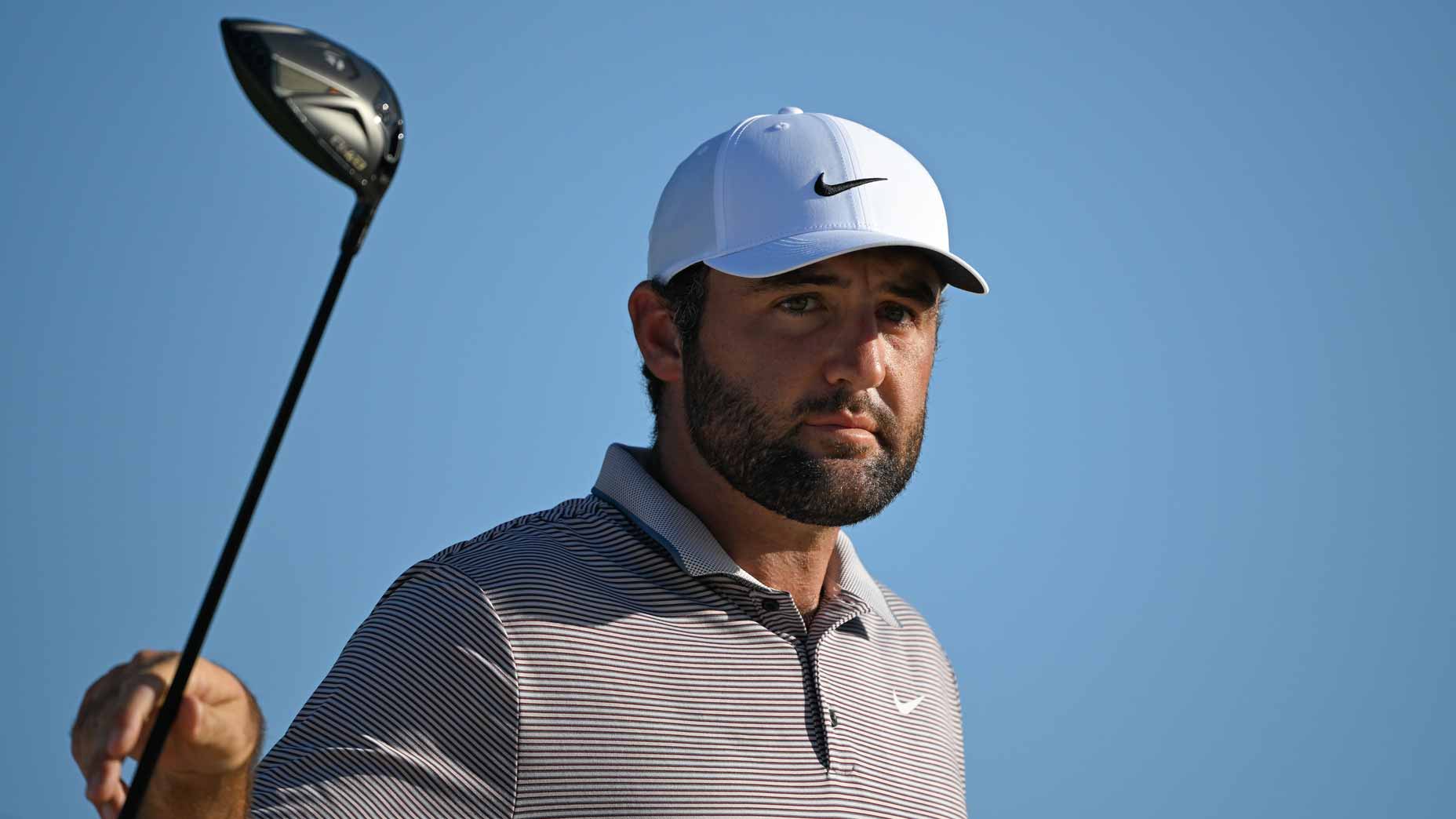ATLANTA, Ga. — When course architect Andrew Green addressed the media just before noon on Tuesday of the Tour Championship, he admitted he was excited to see how players tackled the golf course’s brand-new challenges.
“Man, I’m really happy with all of it,” he said, referring to the reported $30 million overhaul of East Lake Golf Club he’d orchestrated over the course of the past 12 months. “I don’t know if there’s anything I’m overly stressed about.”
Some 24 hours into the unveiling of what the tournament called a “historic restoration,” reviews were already piling in. Xander Schauffele had experienced so much success on the previous version of East Lake that he admitted he was tempted to jump in front of a bulldozer, but he was keeping an open mind.
“It’s just new,” he said. “It’s firm. It’s fast. Needs to settle in.”
“It’s definitely interesting,” added Scottie Scheffler, neither criticism nor endorsement. “It’s basically a new golf course from what it was before.”
“Well, everybody keeps saying how different it is, but it’s obviously just a new golf course for me, so I don’t really know anything different, which is great,” said Shane Lowry, who’s playing in his first Tour Championship.
And Viktor Hovland, who said the new-look East Lake felt like “a major championship golf course,” added that he was impressed with the way Green had added strategy to tee shots.
“I wouldn’t say East Lake ever had a lot of strategy off the tee before,” he said.
In all it seems like Green’s work will net out as a positive. He’s tapped into the course’s history and adapted it to the modern game; players will end up with more multidimensional challenges and fans will enjoy more compelling viewing than the straightforward test we’ve seen for so many years. But that doesn’t mean it’ll happen without a couple hiccups.
Back to Green, then, who added this to his remarks: “I’m interested to see how they play 14 and 18. Eighteen is in their head. I can tell already.”
He was right, in a sense. Eighteen was in their head. Both players and caddies had already been talking through creative strategies for tackling the finishing par-5, which has a sloped fairway, brutal rough, a lake guarding the approach shot and minimal margin for error.
“If you hit it down there, you’re going to end up with a lie that you just have to judge. We’ll see. It’s not the same as it used to be, so there’s some differences there,” he said.
Players who hit the fairway would be tasked with hitting an approach off an uneven lie. Players who missed the fairway? They’d just hope to lay up safely, avoiding water, trees and rough in the process. Green wondered aloud whether players would attempt to thread driver down into the narrow landing area or try to chase a 3-wood down the slope.
“But only playing it a handful of times, we’ll see what the guys end up doing.”
It didn’t take Scheffler, the World No. 1, long to figure out an alternate strategy. During his practice round he and his playing partners toyed around with firing drives over the left tree line and onto the fairway of the adjacent par-4 10th. Scheffler offered this in-depth explanation from a player’s standpoint:
“The way they reshaped the fairway there, the fairway crowns like this,” he said, demonstrating the slope with his hands. “And it’s a very difficult fairway to hit, and if your ball goes into the right rough and you don’t get a good lie, you have to chip it 10 yards down the fairway because there’s nowhere really to lay up.
“Before there used to be some opportunity there, where now there’s not. I’ll describe it this way: If you hit it into the right rough, you’re now hitting it over a pond to a fairway that’s pretty narrow. If you hit it in the left rough you probably can’t hold the green from there, and if you don’t get it to the fairway, you’re going to be in the water.
“It seems like a safer play to take all that out of play, hit it down 10. The green is going to be pretty extraordinarily hard to hold anyways with it being a downslope and having a long club in there. It’s more you’re playing for birdies. There is less opportunity, I think, for eagle than there was before.”
Scheffler added that with how firm the brand-new greens are it was nearly impossible to hit and hold it in two.
“I saw Rory hold 18 green today,” he said, citing the exception that proved the rule. “But he landed in the fringe over the bunker. The fringe is soft; the greens are firm. It’s very challenging to hold the green in two.
“If you don’t hit the 18th fairway you’re in a heap of trouble. That’s something I’m still going to toy around with tomorrow, but I think it’s likely you’ll see some guys hitting it down the 10th because it’s a safer play.”
Schauffele, the World No. 2, admitted that he, too, was considering the alternate pathway.
“Yeah, I hit two drives up 10, actually,” he said. He reiterated the challenges of hitting the fairway and, if you missed the fairway with your tee shot, the challenges of getting back to the fairway with your second.
“I don’t think anyone on this property can hold a green hitting a lob wedge or sand wedge out of the rough into the green,” he added.
Their in-depth explanations had an unintended consequence: They let the Tour know something was afoot. By Tuesday afternoon rules officials were conferring to discuss their options. It was, one player admitted, a “lose-lose situation.”
Leave the hole as it is? You’d risk the PGA Tour’s largest prize — the winner here gets $25 million — going to a player who’d intentionally shipped his tee shot down the wrong hole as he played up No. 18, rejecting the architect’s intention and adding an element of ridicule to the proceedings.
The alternative wasn’t much better: introduce internal out-of-bounds, effectively admitting that the mega-restoration hadn’t noticed a blind spot at its highest-stakes juncture. Yikes.
It got worse. Players working their way around the front nine had been mulling another alternate strategy: Rather than take on the dogleg-right sixth hole they were eyeing the seventh fairway off the tee, leaving a better angle up the hill.
In day-to-day play it’s likely that most members would respect the intent of the course and its architect. It’s also safe to assume that most members can’t carry driver Tour-length distances. But with an eight-figure first prize awaiting the winner (and the runner up) there’s no efficiency these pros won’t try to exploit.
The sudden flurry of creative thinking was reminiscent of the 2021 U.S. Amateur at Oakmont, which came after a decade of tree removal — they’d taken out more than 12,000 — that allowed players to send drives up the wrong fairways on as many as six holes, dodging devastating bunkers in the process. The PGA Tour has seen its share of alternate routes, too, including Viktor Hovland’s insistence on playing down the wrong fairway at No. 15 at Riviera.
As players continued to mull their options, a resolution arrived Wednesday. First it came via text message to the 30-player field and later via email to tournament media.
“For the safety of spectators, players, caddies and everyone on property at East Lake Golf Club, the PGA TOUR Rules Committee has established two internal boundaries for this week’s TOUR Championship,” the statement read. “The fairway on No. 7 is out of bounds during play of No. 6, and the fairway on No. 10 is out of bounds during play of No. 18.”

The release quoted Chief Referee Gary Young: “This decision was made primarily out of safety concerns, specifically to prevent players from effectively putting people in harm’s way by taking an alternate route. When it sounds like that is going to be a possibility, it necessitates an internal boundary.”
Chris Kirk praised the Tour for its real-time adjustment.
“I think it’s very necessary,” Kirk said, adding that he’d advised officials to take action. “I told them that for us as players, we’re going to do whatever we feel like is going to give us the best score, and it sounded like to me that was a no-brainer to go down No. 10.
“But I really like protecting the integrity of the design of the golf course, and I think that it would have been a pretty bad look on TV if you’re finishing a golf tournament and everybody is hitting it down the wrong fairway. It would have distracted for sure from how — the renovation of the golf course is fantastic. The green complexes are so fun, so unique, such a great variety. I think that the course is really, really great, and so that would have certainly distracted from that if we were all playing a hole down the wrong fairway.
“But like I said, if you do a full-blown renovation like this and there’s only one small little nit-picky thing that people can find, that means you did a pretty damned good job.”
On Wednesday tournament officials could also be seen inspecting the rough right of the 18th fairway. Word circulated later in the day that they would be taking the rough down slightly on that side of the hole to make the second shot more playable.
Now, ironically, a drive unintentionally played down No. 10 will earn players a two-stroke penalty. Let’s hope none hit the wrong fairway with the tournament on the line.
One more fun fact: Typically in-course O.B. is indicated by white stakes. But in this case the boundary will be demarcated by the edge of the fairway itself. According to Golf Channel’s Todd Lewis, this is the first time ever that the PGA Tour has marked out-of-bounds this way.
The restoration is making history already.










